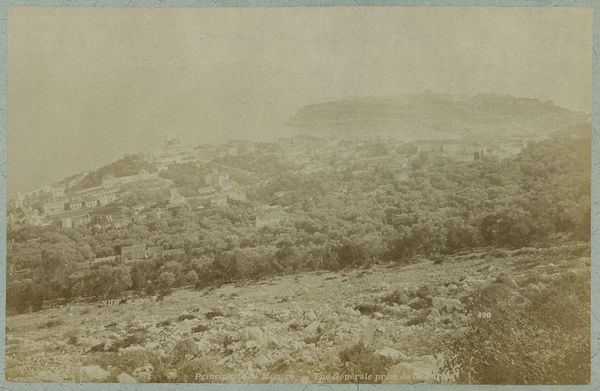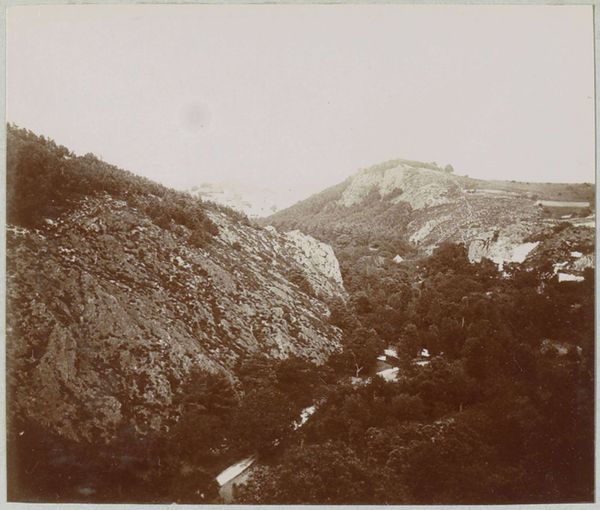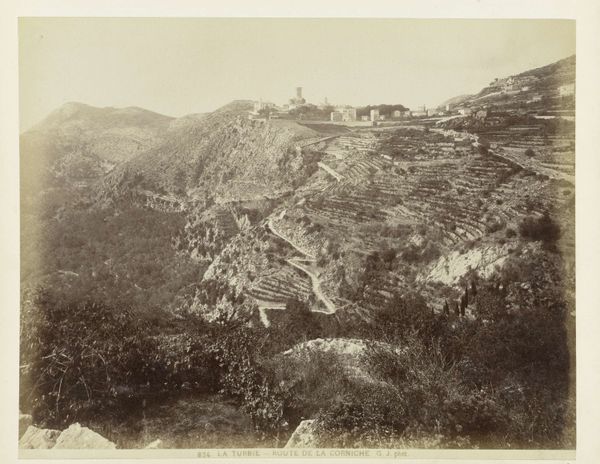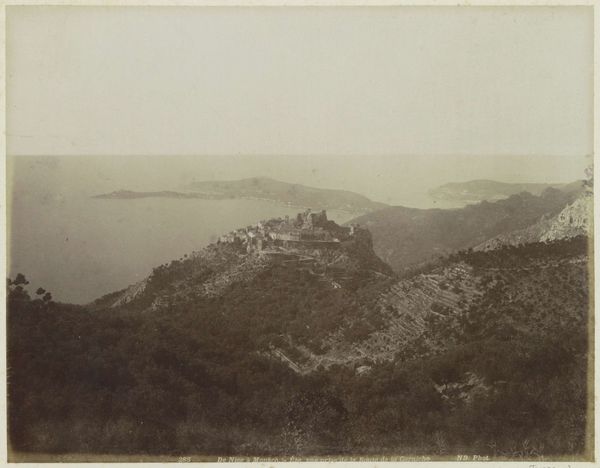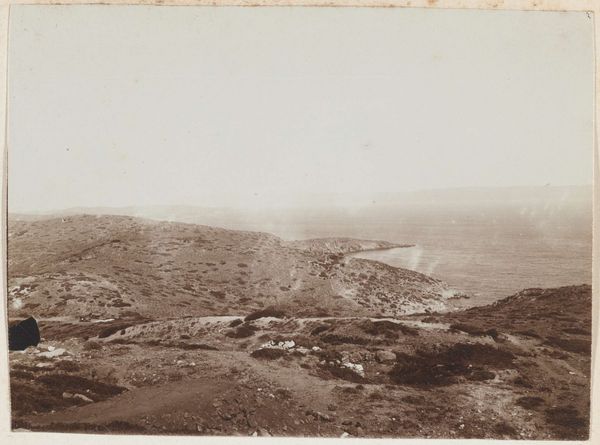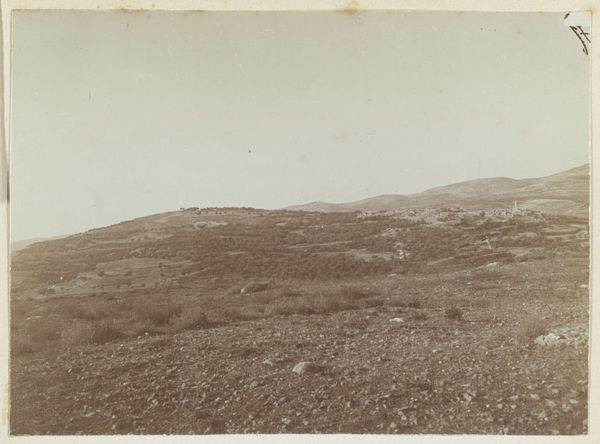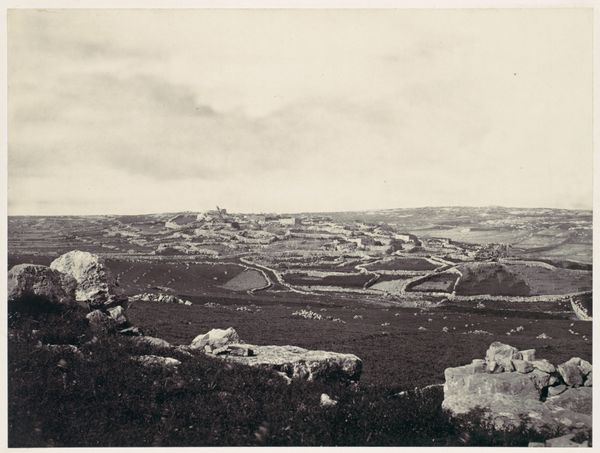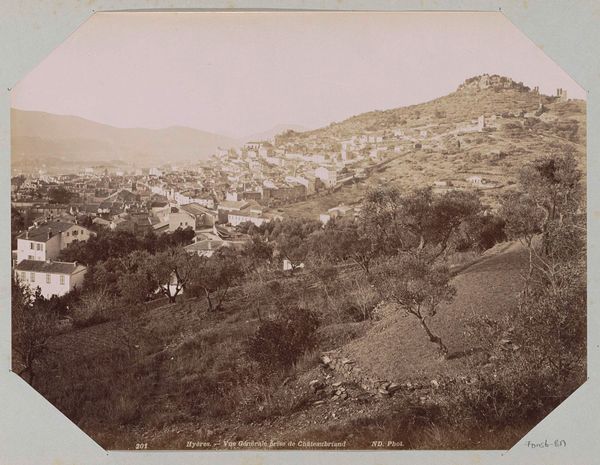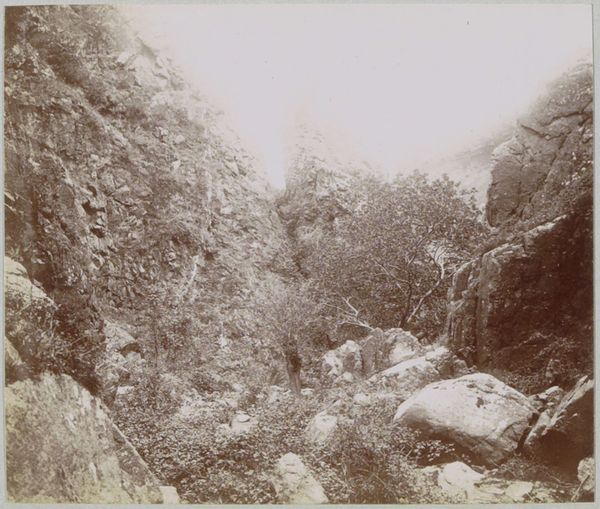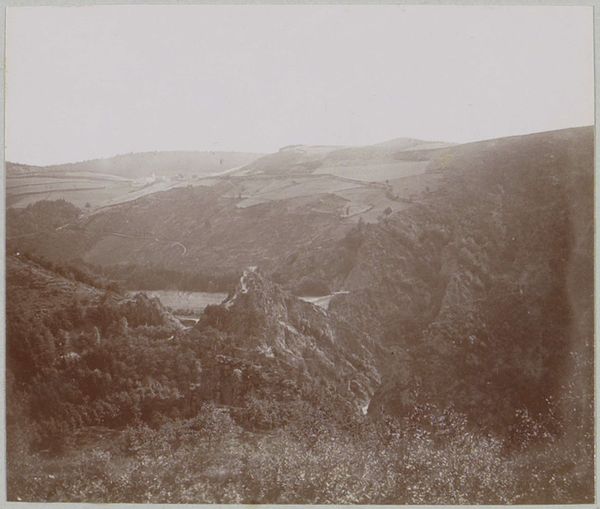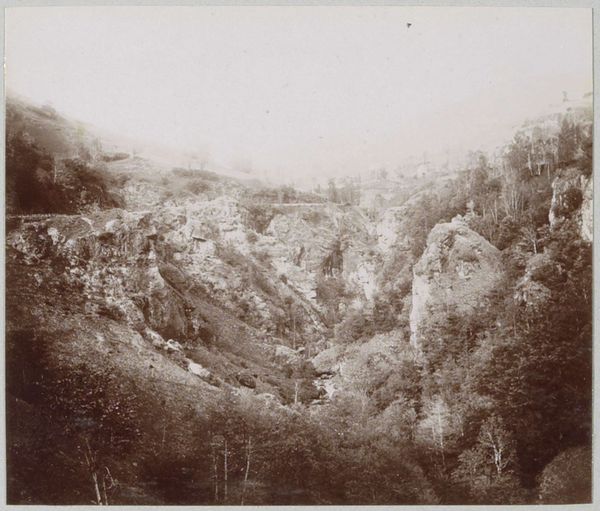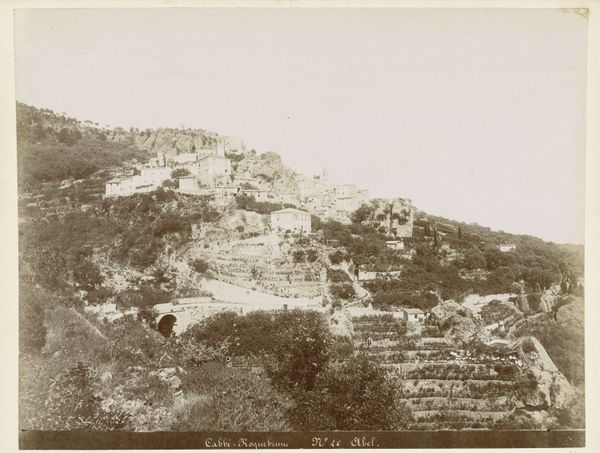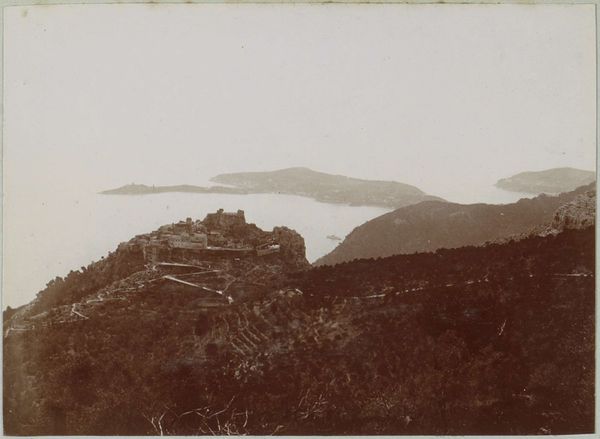
print, photography
# print
#
landscape
#
photography
Dimensions: height 79 mm, width 109 mm
Copyright: Rijks Museum: Open Domain
Curator: Here we have "Gezicht op Tourrettes-lèz-Vence", a landscape photograph taken in 1903. It now resides here at the Rijksmuseum. Editor: It's incredibly still. I can almost feel the weight of the stone under that village; it has an interesting tonal range. It’s neither a crisp, clear image nor a soft, hazy one. The greyscale gives a sort of weight to the piece. Curator: That stillness could also speak to a wider cultural context, where the documentation of such "unspoiled" locations feeds into a narrative of romantic escapism sought by those living in increasingly industrialised urban centers. This place, Tourrettes-lèz-Vence, then becomes more than a physical location; it's a projection. Editor: That’s a sharp reading. For me, I can't ignore the texture. I'm thinking about how the photograph itself was made. The physical labor and chemical processes involved, right down to the selection of paper, that give it a tactile quality. It reminds you that it is a fabricated image, as you noted. The contrast is excellent. Curator: Indeed, but what makes this fabrication circulate, who gets to decide which landscapes warrant preservation through photography? This act of photographing is, itself, a form of claiming space, especially when considered through the lens of early tourism and the associated power dynamics. It also showcases wealth. Only those with the economic resources were able to participate in the market for luxury printed goods and photography. Editor: Right. It is an exclusive look. Thinking about materials though, I wonder what specific photographic print process Delizy used and whether its inherent limitations shaped the composition, influencing its creation and, ultimately, the consumption of the image. Curator: Well, I see a meditation on the complex relationship between art, nature, and societal power. Editor: And I see a study in earth, labour, and time. Both quite potent for a simple image of landscape!
Comments
No comments
Be the first to comment and join the conversation on the ultimate creative platform.
